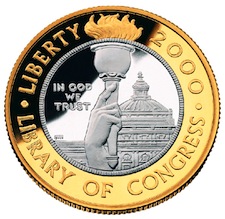It’s the time of year for saving money!
 The LA Times published an article about the Library of
The LA Times published an article about the Library of
Congress’ digital transfer project. Sequestered as near to the middle of
nowhere as you can get in Virginia, the US government has “nearly 100 miles of
shelves stacked with 6 million items: reels of film, kinescopes; videotape and
screenplays, magnetic audiotape; wax cylinders; shellac, metal and vinyl discs;
wire recordings; paper piano rolls; photographs; manuscripts; and other
materials.” Called “the Packard Campus,” this $250-million site with its 45-acre
vault may be our best hope of preserving our early cultural and media arts
history.
Naturally, when you have things of value you have
conflict. The problem here is that the best, most important materials are mired
in the maze of copyright law. Much of the recent “donation” from Universal
Music Group came with strings attached, including no “commercialization
rights.” Some collections, such as “The Savory Collection” which consists of
live radio broadcasts by many jazz greats, is so mired in legal issues that it
will take years for curators and lawyers to sort out. Meanwhile the recordings
will remain safely sequestered on the library’s high-security shelves.
The library began archiving analog onto digital media in
2001 using DAT. That caused problems. According to preservation specialist
Mathew Barton, “I love to give the example that the cylinder
from 1900 may be easier to play back than the DAT [digital audiotape] from
2001…but, there are a lot of DATs that just won’t play now.” The article
doesn’t mention what technology the library uses for current digital transfers,
but whatever format used, it will hopefully be more archival.
According to the library’s conservation
experts, the library’s analog originals stand a much better chance of being around
in a couple of hundred years than the current sate-of-the-art digital storage.
Fortunately while the library moves forward in its digital transcription
projects, it still retains the originals for future generations. And it may
take a couple of generations for some of the most commercially viable recordings
to be enjoyed freely by its “owners,” the US public.





